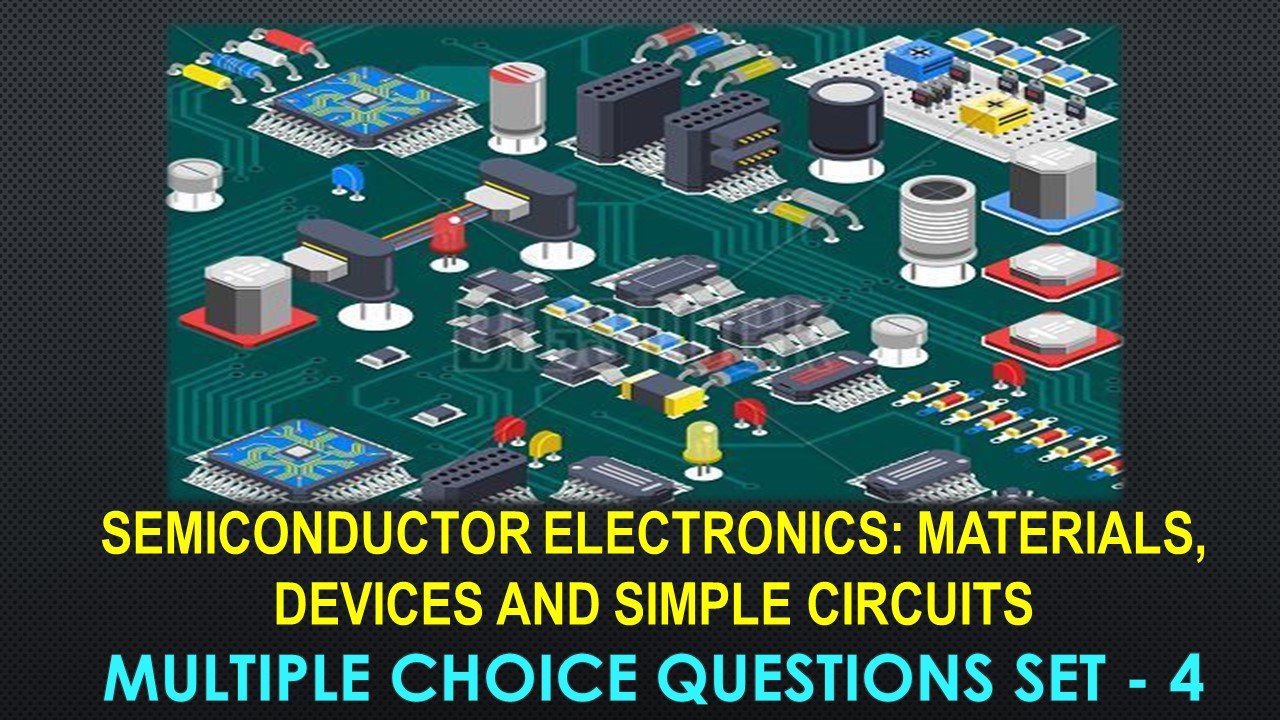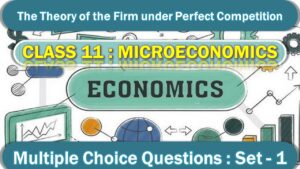CBSE Class 12 Semiconductor Electronics Materials Devices and Simple Circuits Multiple Choice Questions with Answers. MCQ Questions Class 12 Semiconductor Electronics Materials Devices and Simple Circuits with Answers Is Prepared Based on Latest Exam Pattern. Students can solve NCERT Class 12 Semiconductor Electronics Materials Devices and Simple Circuits MCQs with Answers to know their preparation level.
Students who are searching for NCERT MCQ Questions for Class 12 Semiconductor Electronics Materials Devices and Simple Circuits with Answers are compiled here to get good practice on all fundamentals. Know your preparation level on MCQ Questions for Class 12 Semiconductor Electronics Materials Devices and Simple Circuits with Answers. You can also verify your answers from our provided MCQ Class 12 Semiconductor Electronics Materials Devices and Simple Circuits with Answers. So, ace up your preparation with MCQ of Class 12 Physics Examinations.
MCQ Questions Class 12 Semiconductor Electronics Materials Devices and Simple Circuits with Answers - Set - 4
Question 1:
In intrinsic semiconductor at room temperature, the number of electrons and holes are:
(a) equal
(b) unequal
(c) infinite
(d) zero
Correct Answer – (A)
Question 2 :
On heating, resistance of semiconductors:
(a) decreases
(b) increases
(c) remains same
(d) first increases then decreases
Correct Answer – (A)
Question 3 :
In semi conductor which are responsible for conduction:
(a) only electron
(b) electron and hole both
(c) only hole
(d) None of these
Correct Answer – (B)
Question 4 :
In a common base amplifier the phase difference between the input signal voltage and output voltage is :
(a) π/2
(b) 0
(c) π/4
(d) π
Correct Answer – (B)
Question 5 :
To obtain electrons as majority charge carriers in a semiconductors the impurity mixed is:
(a) monovalent
(b) divalent
(c) trivalent
(d) pentavalent
Correct Answer – (B)
MCQ Questions Class 12 Semiconductor Electronics Materials Devices and Simple Circuits with Answers
Question 6 :
p-n junction diode can be used as:
(a) amplifier
(b) oscillator
(c) detector
(d) modulator
Correct Answer – (C)
Question 7 :
In binary system III represents:
(a) 1
(b) 3
(c) 7
(d) 100
Correct Answer – (C)
Question 8 :
Energy bands in solids are a consequence of:
(a) Ohm’s Law
(b) Pauli’s exclusion principle
(c) Bohr’s theory
(d) Heisenberg’s uncertainty principle
Correct Answer – (B)
Question 9 :
In the middle of the depletion layer of a reverse biased p-n junction, the:
(a) electric field is zero
(b) potential is maximum
(c) electric field is maximum
(d) potential zero.
Correct Answer – (D)
Question 10 :
For germanium crystal, the forbidden energy gap in joules
(a) 1.216 × 10-19
(b) 1.76 × 10-19
(c) 1.6 × 10-19
(d) zero
Correct Answer – (A)
- NCERT Solutions Class 11 Chemistry Chapter 1 : Some Basic Concepts of Chemistry
- NCERT Solutions Class 11 Chemistry Chapter 2 : Structure Of The Atom
- NCERT Solutions Class 11 Chemistry Chapter 3 : Classification of Elements and Periodicity in Properties
- NCERT Solutions Class 11 Chemistry Chapter 4 : Chemical Bonding and Molecular Structure
- NCERT Solutions Class 11 Chemistry Chapter 5 : States of Matter
- NCERT Solutions Class 11 Chemistry Chapter 6 : Thermodynamics
- NCERT Solutions Class 11 Chemistry Chapter 7 : Equilibrium
- NCERT Solutions Class 11 Chemistry Chapter 8 : Redox Reactions
- NCERT Solutions Class 11 Chemistry Chapter 9 : Hydrogen
- NCERT Solutions Class 11 Chemistry Chapter 10 : The s-Block Elements
- NCERT Solutions Class 11 Chemistry Chapter 11 : The p-Block Elements
- NCERT Solutions Class 11 Chemistry Chapter 12 : Organic Chemistry: Some Basic Principles and Techniques
- NCERT Solutions Class 11 Chemistry Chapter 13 : Hydrocarbons
- NCERT Solutions Class 11 Chemistry Chapter 14 : Environmental Chemistry




